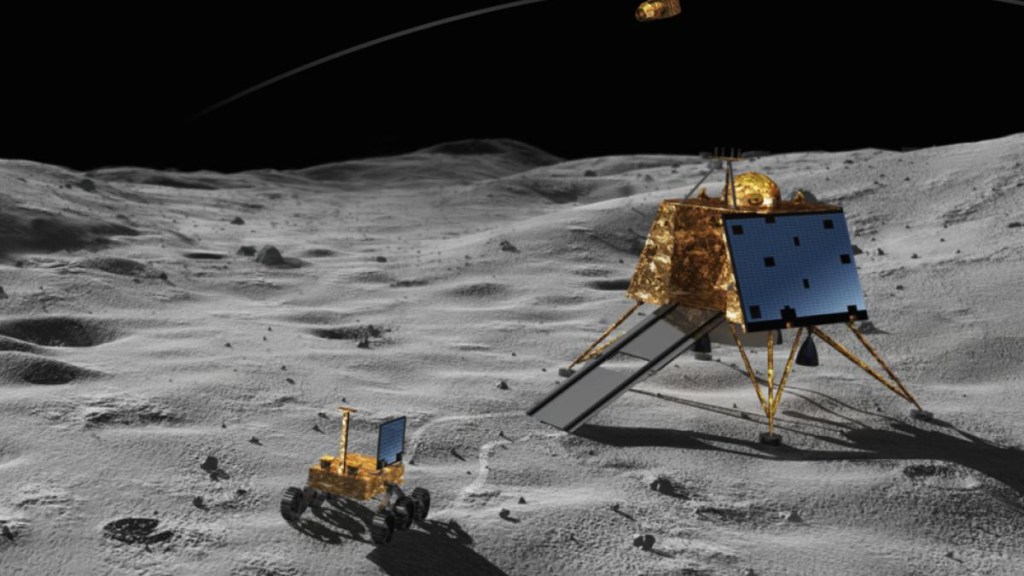The Indian Space Research Organisation’s (ISRO) monumental lunar mission, Chandrayaan-3, has reached a stage of indefinite dormancy on the Moon. This mission, which made its lunar descent on August 23 and successfully executed a series of experiments, including the deployment of a rover, has now been placed into a perpetual sleep mode.
Although the mission has fulfilled its objectives, it will never embark on a return journey to Earth and will instead remain ensconced on the lunar surface.
As the spacecraft enters this dormant phase, it faces new challenges, particularly those originating from the lunar environment itself. One significant peril stems from the constant barrage of micrometeoroids that incessantly pelt the Moon’s surface.
Threat of micrometeoroid
The lander, Vikram, along with its rover companion, Pragyan, have been powered down, rendering them vulnerable to these micrometeoroid impacts, a common threat faced by stationary lunar missions, an India Today report quoted senior officials as saying. This phenomenon is not exclusive to Chandrayaan-3 and has affected past missions, including the iconic Apollo spacecraft that still rests on the Moon.
Dr P Sreekumar, Professor and Director of the Manipal Centre for Natural Sciences, elucidated that the lunar environment, devoid of an atmosphere and oxygen, eliminates the risk of corrosion, the report further read. However, the spacecraft’s endurance against micrometeoroid impacts remains to be seen, along with its resilience against the extreme cold during the long lunar nights.
Furthermore, the lunar dust poses an interesting challenge. Lunar dust, distinct from Earth’s dust due to the absence of air, has a tendency to cling to surfaces. This was evident during the Apollo missions, which encountered lunar dust issues on their spacecraft.
Chandrayaan-3’s achievements on the Moon
Chandrayaan-3 was primarily designed to explore the lunar south polar region, an area renowned for its potential reserves of water ice, a resource crucial for producing oxygen, fuel, and water. The mission featured a rover tasked with demonstrating its mobility on the lunar terrain, while the lander was engineered to perform a soft and secure lunar touchdown.
The Pragyan rover, equipped with an alpha particle X-ray spectrometer (APXS) and Laser-Induced Breakdown Spectroscope (LIBS), was responsible for conducting chemical analysis of the lunar surface. One of its significant findings was the presence of sulfur near the lunar south pole, a discovery of considerable scientific importance. In addition to sulfur, the rover detected various other elements, including aluminum, calcium, iron, chromium, titanium, manganese, silicon, and oxygen.
Furthermore, the rover played a role in detecting lunar seismic activity using specialized instruments designed to monitor moonquakes. This seismic discovery, coupled with the sulfur detection, has enriched our knowledge of the Moon’s composition and geological dynamics.

